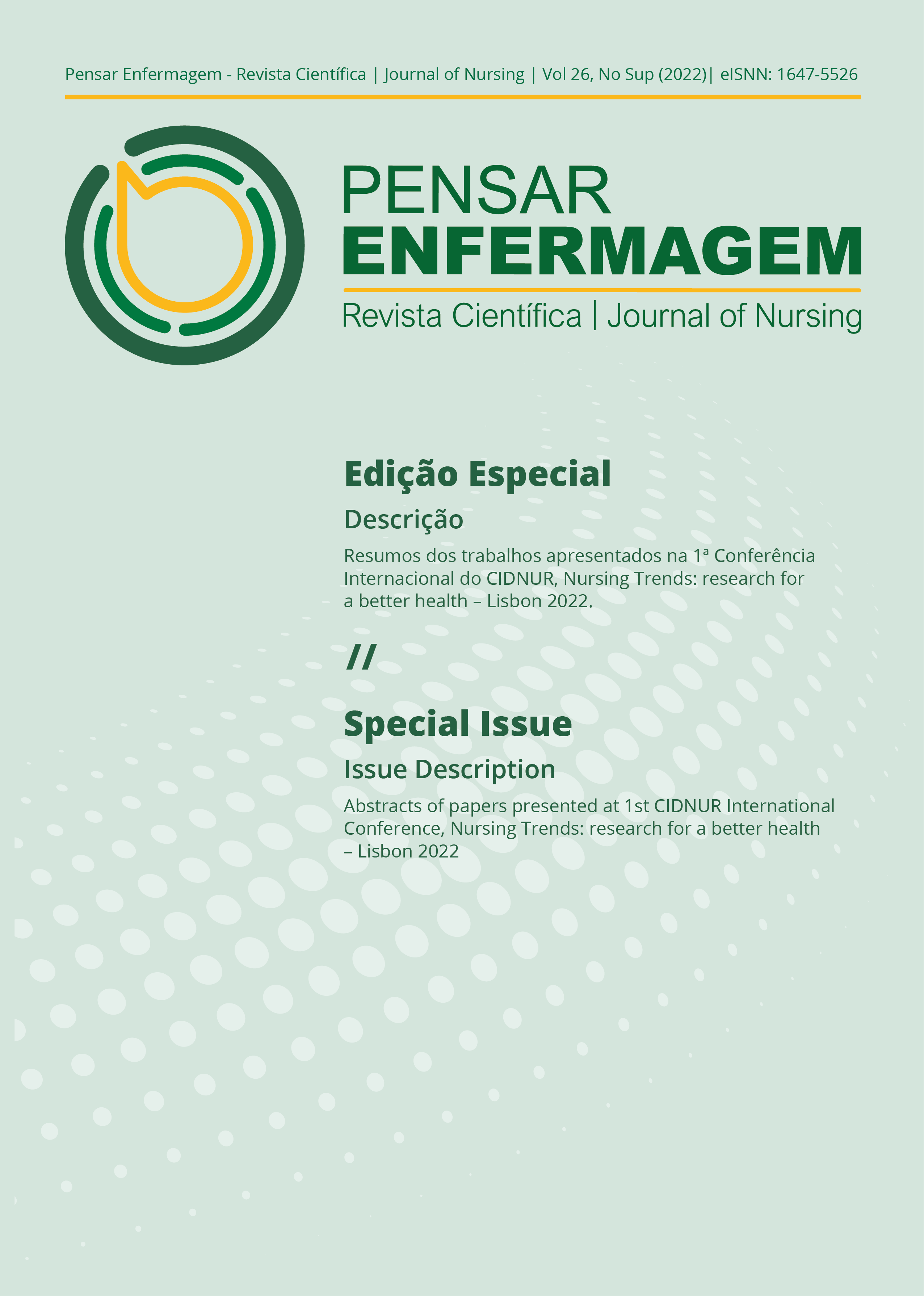Transitional care in the person after hospitalization for COVID-19
Published 2023-01-21
Keywords
- COVID-19,
- Pandemics,
- eHealth Strategies,
- Nursing,
- Rehabilitation
How to Cite
Copyright (c) 2022 Neuza Reis, Maria José Costa Dias, Maria Adriana Henriques, Luís Sousa, Inês Agostinho, Miguel Toscano

This work is licensed under a Creative Commons Attribution 4.0 International License.
Abstract
Introduction: The literature review acknowledges that the transitional care on an e-health modality promotes, not only the continuity of care and proximity contact amongst healthcare professionals, customers, and families, but also, said contact between the hospital and primary healthcare.
This way, the continuity of the rehabilitation program for the patients post SARS-CoV-2 infection is assured, alongside with the patients and their family’s know-how regarding symptom management and early detection of complications, reducing the concern associated with the hospital discharge and increasing the management of unfounded fears and reservations regarding the possible contagion of their families and supporting the transition of the role of informal caregiver.
Objective: Design a tele-rehabilitation intervention for the continuity of care and assistance to patients with long COVID-19 post hospitalization.
Methods: To answer to the question “What are the tele-rehabilitation interventions that allow continuity of rehabilitation care in a patient with long COVID-19 post hospitalization?”, an online Focus Group (FG)1 was put in place on the 28th of April 2022 in the Colibri ® platform. The attendees were 8 nurses, specialists in Rehabilitation Nursing in hospital and community settings, with clinical experience in transitional care, tele-rehabilitation in that situation and/or tele-monitorization of the post SARS-Cov-2 infection rehabilitation programs.
The FG was recorded and transcribed. The qualitative analysis of the findings was performed by two researchers, independently, and according to the technique of content analysis2.
This study was authorized by the Comissão de Ética do Centro Hospitalar Universitário de Lisboa Central (Parecer n. º 1209/2022, 18th of March 2022).
Results and Discussion: In the content analysis, five categories have emerged: Coordination between levels of Care; Tele-rehabilitation of transitional care intervention; Tele-rehabilitation advantages; Opportunities and respective sub-categories. It is consensual that the coordination between levels of care should be multidisciplinary, with the definition of a program of transitional care that allows the continuity of interventions initiated in a hospital setting. Communication and articulation between families and primary healthcare providers emerge as central elements. These, once assured, prevent the defragmentation of care continuity, and preserve the rehabilitation programs initiated in hospitals. If not guaranteed, they are considered as the root cause of failure to assure care centered in these people’s needs.
Conclusion and implications for know-how development: The participants have observed that the emergence of a pandemic on which there was little to no information, made the learning process regarding patients’ care happen in parallel with the development of knowledge regarding the disease and its evolution, prognostic, and rehabilitation process.
The tele-rehabilitation has been an important strategy to guarantee the continuity of care in hospitalized patients, in intensive care or COVID units and that, after long hospitalization periods, were left with sequels that did not allow an adjustment to the daily routine. This cost-effective intervention has also eased the management of human resources during the pandemic.

